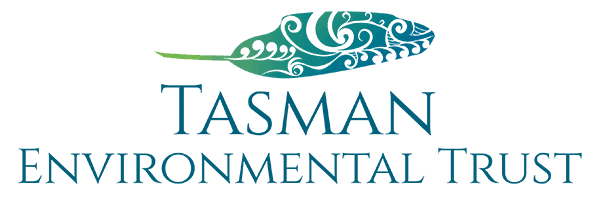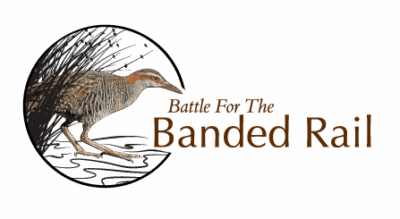Battle for the Banded Rail is a community conservation project restoring the Waimea Inlet’s estuary margins for rare and threatened wildlife. Since 2015, we’ve trapped over 15,000 predators, planted 180,000 native plants, and built a 58 km trapline network to protect the secretive banded rail/moho pererū and other endangered estuarine birds.
Restoring the Waimea Inlet
The Waimeha/Waimea Inlet is a place of beauty and ecological importance. Stretching 65 km from Tāhunanui to Māpua, it is the largest semi-enclosed estuary in the South Island. Ten islands sit within its 3,455 hectares, fed by 22 rivers and streams. The inlet is home to a wonderful array of coastal birds and a range of endangered and threatened native species.
Among them is the elusive banded rail/moho pererū – a shy, ground-dwelling bird that lives in rushland where freshwater trickles into the brackish estuary edge. Here, they hunt for tiny snails, insects, lizards, crabs, seeds, and fruit. But their habitat, and the estuary, has been heavily modified by human activity, and introduced predators pose a constant threat.
A community-led conservation effort
Since 2015, Battle for the Banded Rail has been working with local communities, landowners, schools, workplaces, and agencies to help restore the Waimea Inlet’s estuary margins. Initiated by the Waimea Inlet Forum, the project is now supported by Tasman Environmental Trust, Tasman District Council, Nelson City Council, local iwi, and the Department of Conservation.
Led by Kathryn Brownlie and Tracey Murray, the project has more than 58 km of traplines running from the Honest Lawyer in Monaco to Māpua. This extensive network – over 1,200 traps targeting rats and stoats – is cared for by more than 50 dedicated community volunteers. Since the project began, over 15,000 predators have been trapped, giving the banded rail and other coastal birds a chance to breed and thrive.
Protecting precious wildlife
The Waimea Inlet is home to a host of special coastal bird species, including:
- Moho pererū / banded rail – at risk/declining
- Matuku hūrepo / Australasian bittern – nationally critical
- Koitareke / marsh crake – nationally vulnerable
- Mātātā / fernbird – at risk/declining
- Kuaka / bar-tailed godwit – international migrant
- Kōtuku / white heron – nationally critical
It also supports rare and threatened plants such as the nationally critical coastal peppercress and grey saltbush.
Habitat restoration at scale
Since 2015, local communities, school groups and contractors have planted over 180,000 natives in over 20 key sites around the estuary edge. These plants – selected from DOC’s naturally occurring species list for the Waimea Inlet – help stabilise the shore, restore native vegetation, and provide essential shelter and food for birds.
The project has also established a close partnership with Salisbury School, whose students have grown over 5,000 plants in the past five years, including 1,000 sea rush/juncus kraussii to be planted this winter.
How you can help
The Battle for the Banded Rail thrives because of community ownership and commitment. Volunteers run traplines, take part in planting and weeding bees, and help monitor bird populations. Every single contribution, large or small, is making a difference to the future of the Waimea Inlet.
If you’d like to volunteer please contact [email protected]
Check out this video of our story so far, or these useful ‘how to’ videos on Planting, releasing and potting up plants and how to set a trap.


